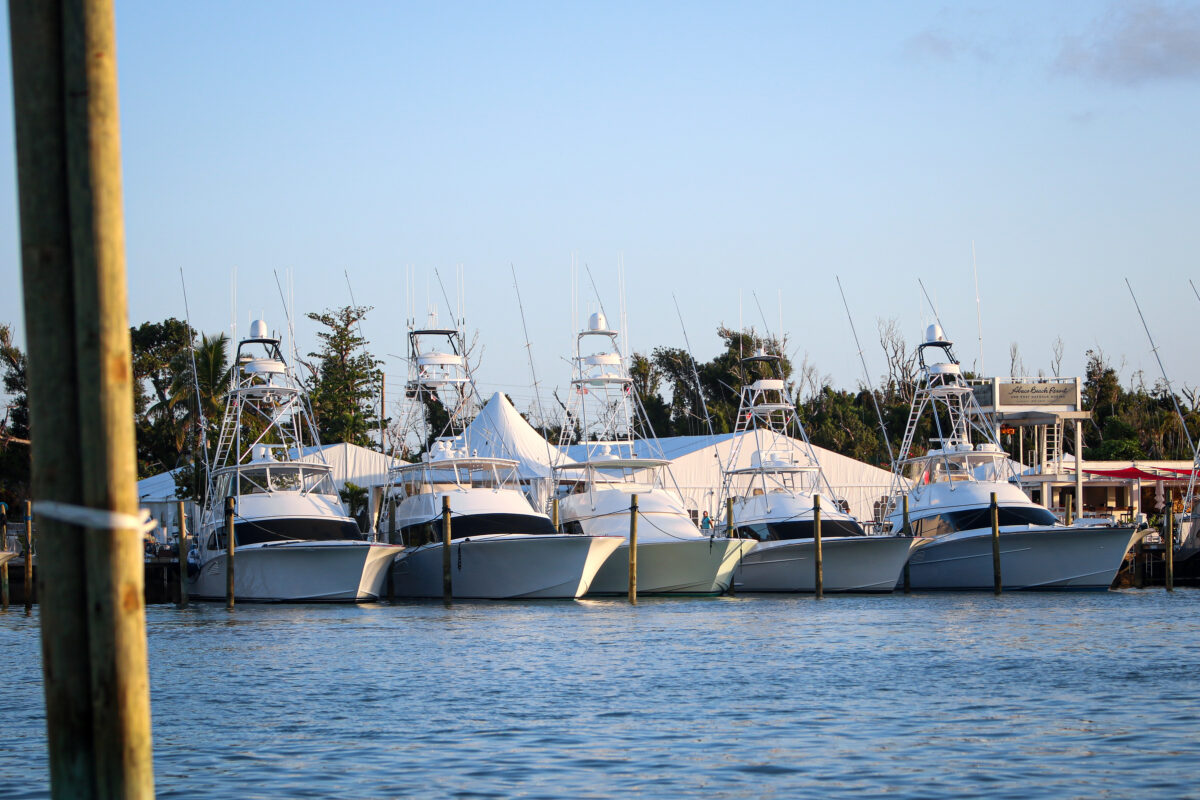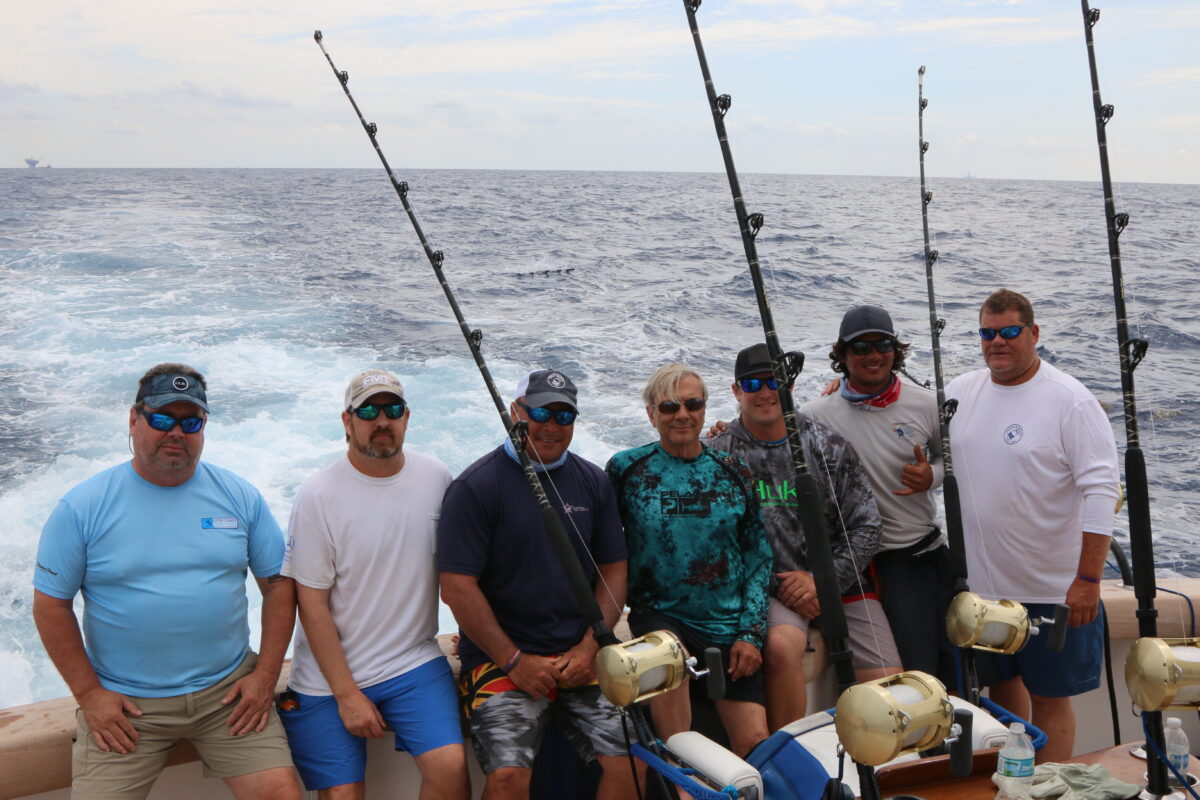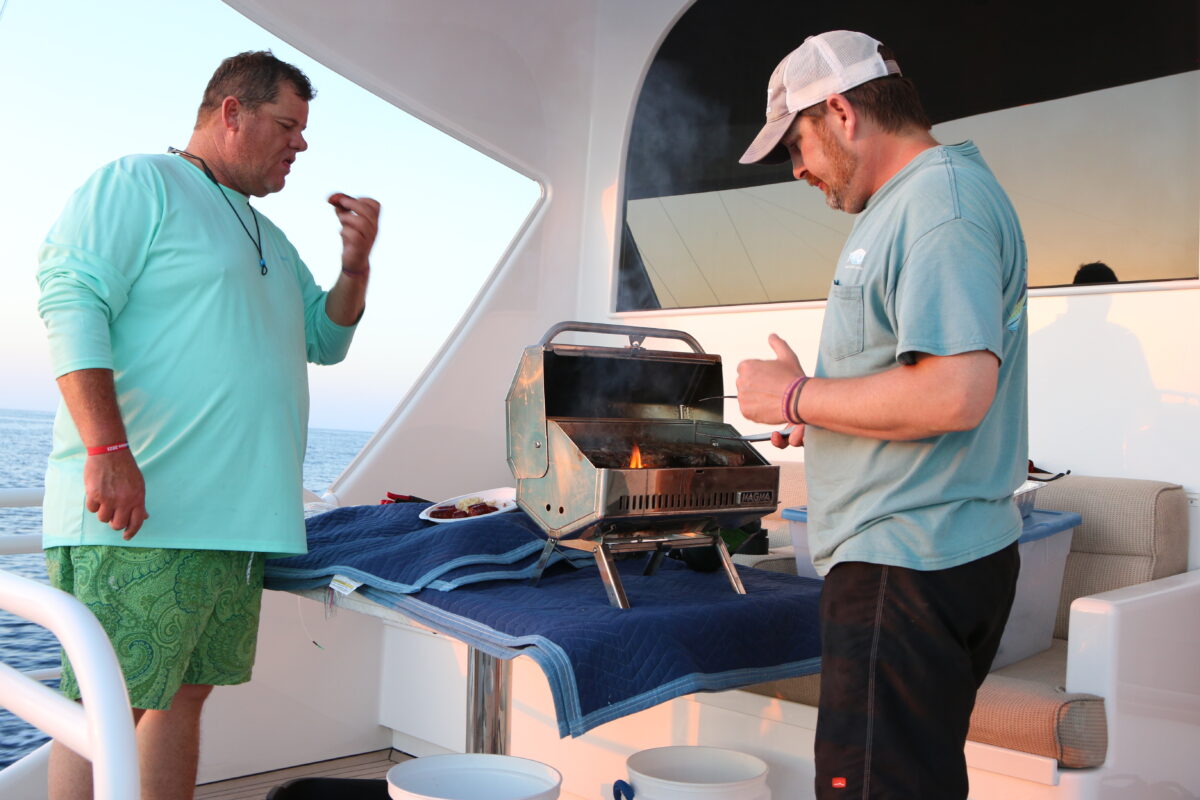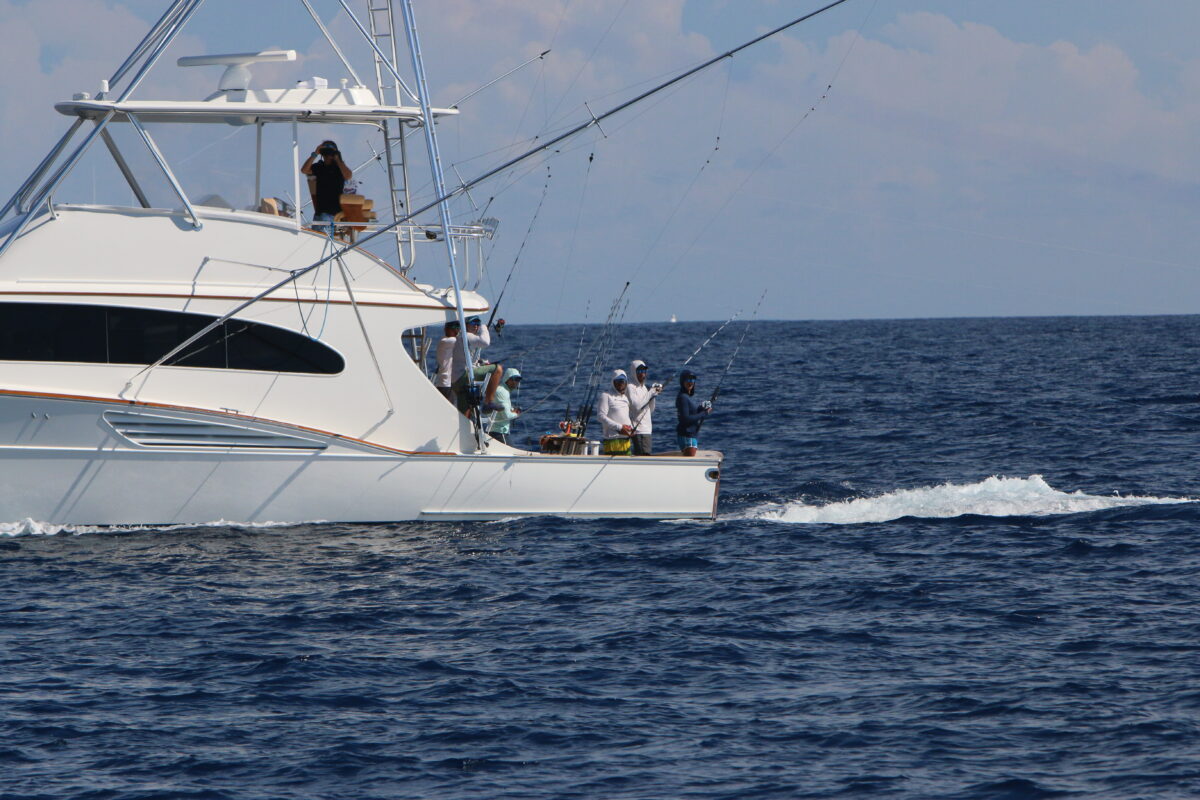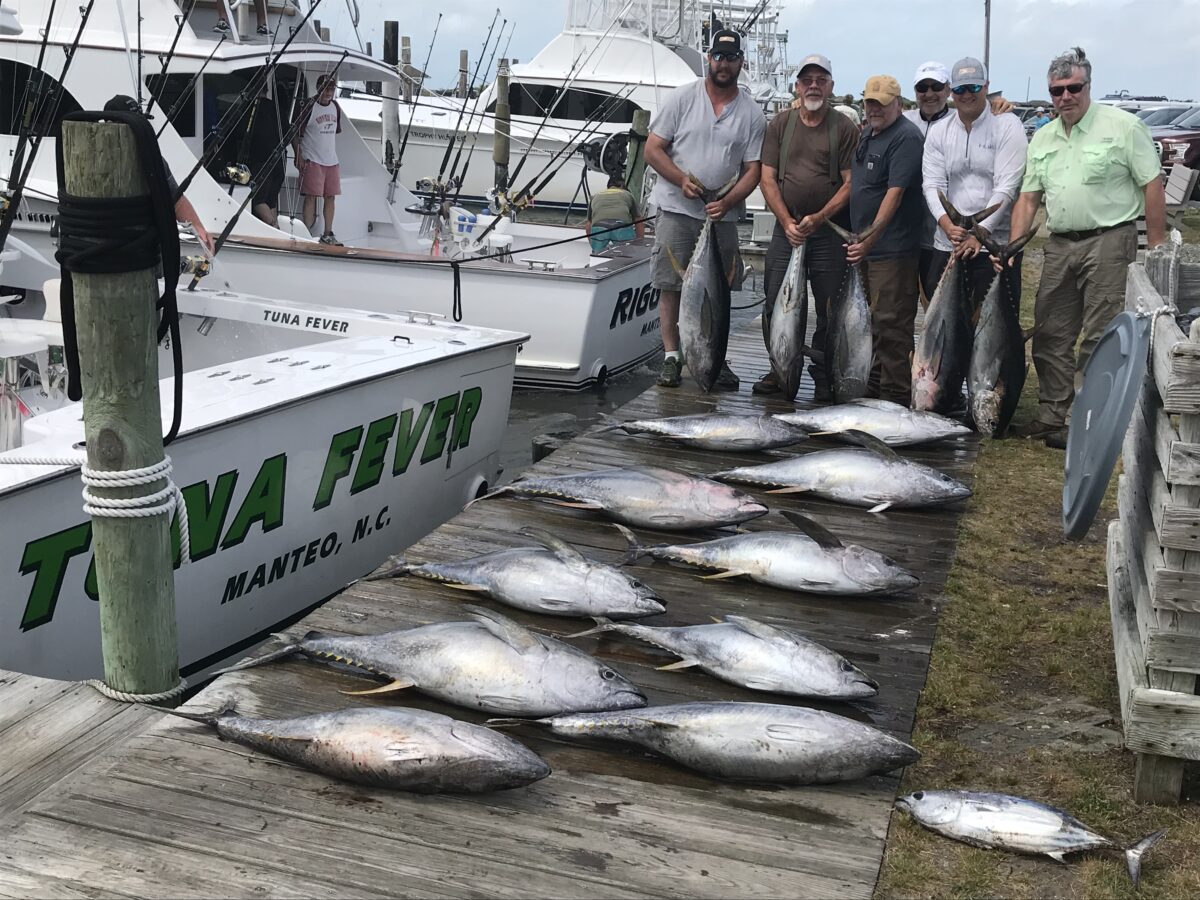Watching a NASCAR race can be monotonous until a crash occurs. Many spectators tune in for hours in the hopes to see a few seconds of a death-defying wreck. You watch the race carefully for hours, scheduling restroom and food breaks in conjunction with commercials, or if watching live, a dash to the concessions. Normally, the moment you step away from the action you miss the big event. This same scenario takes place every day while sportfishing; long days at the helm or in the cockpit and a lot of open ocean can easily create a mind-numbing scenario for even the best crew. The captain has a tedious job at the helm. He must observe the other boats in the area, navigate safely, monitor the engines, pumps and other critical systems, communicate on the radio, text, phone, etc., watch the fishing spread, operate the teaser reels, scan the water for signs of fish and, of course, survey the marine electronics”chartplotters, depth sounder, and the weather and water temperature. While most tournament captains honed these skills into a second nature, the recent addition of live scanning sonar has overloaded many captains helm tasks. Watching a live sonar screen demands attentiveness”look away for too long and you might miss a fish swimming through the sonar beam.
Spotting With Sonar
A traditional sounder pings the water directly under the boat and records that image on a historical graph on the screen. A modern sonar has no history; the picture you see is a live view of what is around the water beneath your boat. A fast swimming fish can swim into and out of the sonar beam rather quickly, where only an attentive sonar operator would notice and act accordingly. Even the direction of the swimming fish can change the screen image; a fish swimming perpendicular to the boat travel will show a much larger ping on the sonar than a fish swimming parallel to the boat. A tournament sportfisher crew will monitor and track most any pings on the sonar to investigate if they are the targeted species and then give chase if needed. So how can a competent captain add to their repertoire the monitoring of a live sonar system while at the same time performing all the other duties? Get help! An airplane pilot has a co-pilot seated next to them, a rally driver has a navigator next to them, a president has a vice president, a sportfish captain has a ping jockey!
The Ping Jockey’s Role
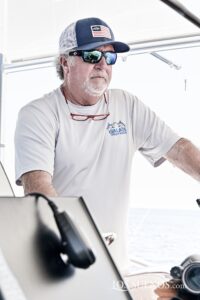
It seems that an expert ping jockey, like Capt. Steve Lassley, is the latest must-have for tournament teams looking to gain an edge over their competition. (Photos/Ronald Rojas)
Skills for Ping Jockeys
What makes a good ping jockey? First, a thorough understanding of the equipment, including all the features, functions, controls and adjustments”often this is acquired only through experience, but manuals, videos and manufacturer training can complement on-the-job learning. Once the equipment technical features are mastered, even more skill is required to determine what the screen image represents. Is it a whale, bait ball, thermocline, boat wake or tournament-winning pelagic? Once these fish identification skills are learned, generally from hours behind the screen, the next skill is communication. A ping jockey must be able to communicate to the captain where the targeted fish is in relation to the boat. Range, heading and depth are all important and need to be immediately conveyed to the captain to maintain sonar contact with the fish. Perhaps the most critical skill a sportfish ping jockey must have is stamina. Requiring long hours at the helm staring at the screen throughout the fishing day, a ping jockey cant get seasick, take naps, spend the afternoon in the galley or head”they need to watch the screen with the utmost vigilance throughout the day.
Where the Ping Jockey Works
A typical sonar installation includes the difficult details on where to install the tube and related equipment in the machinery space. Often overlooked is the operation of the equipment at the helm. If you plan to incorporate a ping jockey position on the helm, you will want to be sure the controls and video screen are located away from the captain position, allowing both helmsman and ping jockey to do their jobs without interfering with each other. Having to reach across the wheel to adjust the sonar doesnt make for a good working relationship. Many boats do not permanently mount the sonar controls, allowing the unit to be moved to different positions, so if the captain runs the sonar alone, the controls can be right in front of the helm, and if a ping jockey joins the team, the controls can be moved to a secondary helm seat, away from the captain. Many of the sonars have a scaled down remote control that is cable of performing the basic tuning of the sonar. This should be installed so it can reach any needed position without clutter. One team I spoke with decided to mount the secondary remote in the cockpit, allowing crew members to view and control the sonar when and if needed. Who makes a good ping jockey? It could be a marine electronics enthusiast, an experienced angler who has a technical inkling or maybe even a gamer from our youthful generation. The ping jockey position on a tournament sportfish boat falls in line with other dedicated roles, not much different from professional sports teams. A two-person team consisting of a captain and mate is not enough anymore when entering tournaments. There are more specialized positions that combine to form a winning team.
The Rest of the Crew
A tower spotter must have keen eyesight and a calm stomach, be nimble enough to climb up and down the ladder and be skilled in identifying different billfish species while calmly communicating the visual environment nearby. This tower person can easily add to the situational awareness during fishing activities. A wireman is the crewmember that most skilled at leadering a fish. They must be able to monitor the line and communicate direction changes to the captain. They have an inherent knowledge of knowing when the fish is coming up, keen on when the line is coming in or going out and aware of the swivel. Once the leader nears the rod tip, the wireman should be in complete control of the cockpit and provide direction to the captain whether releasing or boating a fish. The dredge specialist is focused on elaborate teasers and other fish-attracting devices that are regularly part of the spread and can quickly become entangled. This person oversees setting up the equipment in advance, controlling the electric reels and helping assist the rest of the crew when deploying and positioning hook baits in the spread.
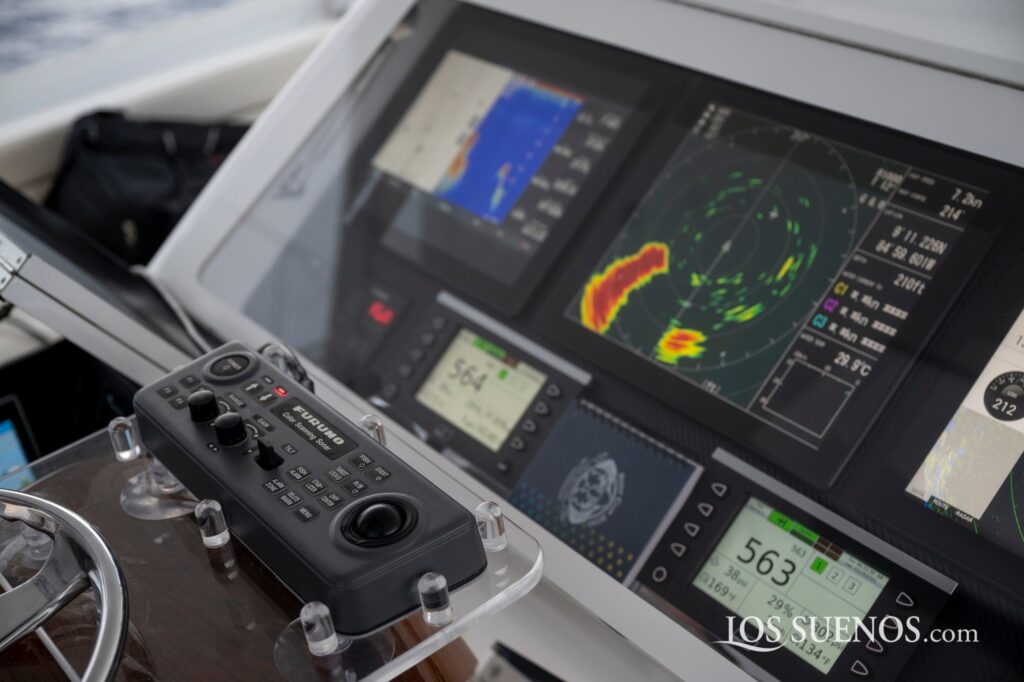
Once a fish is hooked, experienced ping jockeys decrease the beam angle to keep the hooked fish in view and look for free-swimmers. (Photos/Los Sueños Resort & Marina)
Crew Coordination
The days of shouting and yelling between crew members are over, tournament fishing teams now communicate with each other using self-contained wireless headsets”this allows calm and quiet communication while fishing, assuring the right team member is informed throughout the day. A leading headset system, Eartec, can allow anyone or everyone to talk at once and can even connect to the boat stereo system for those without headsets to hear the other crew members. When it comes to finding the best fishing grounds, some captains seem to have that fifth sense. Such helmsmen can consistently navigate to productive waters using little more than visual observation of the conditions and a chart or two. However, times are changing fast and even the most experienced captains cannot compete with the capabilities of modern technology. While the ping jockey is a relatively new position, honing team dynamics throughout the season has proven to produce more consistent results, and even adding just one or two specialty positions can help improve your chances of landing in the winner circle.








